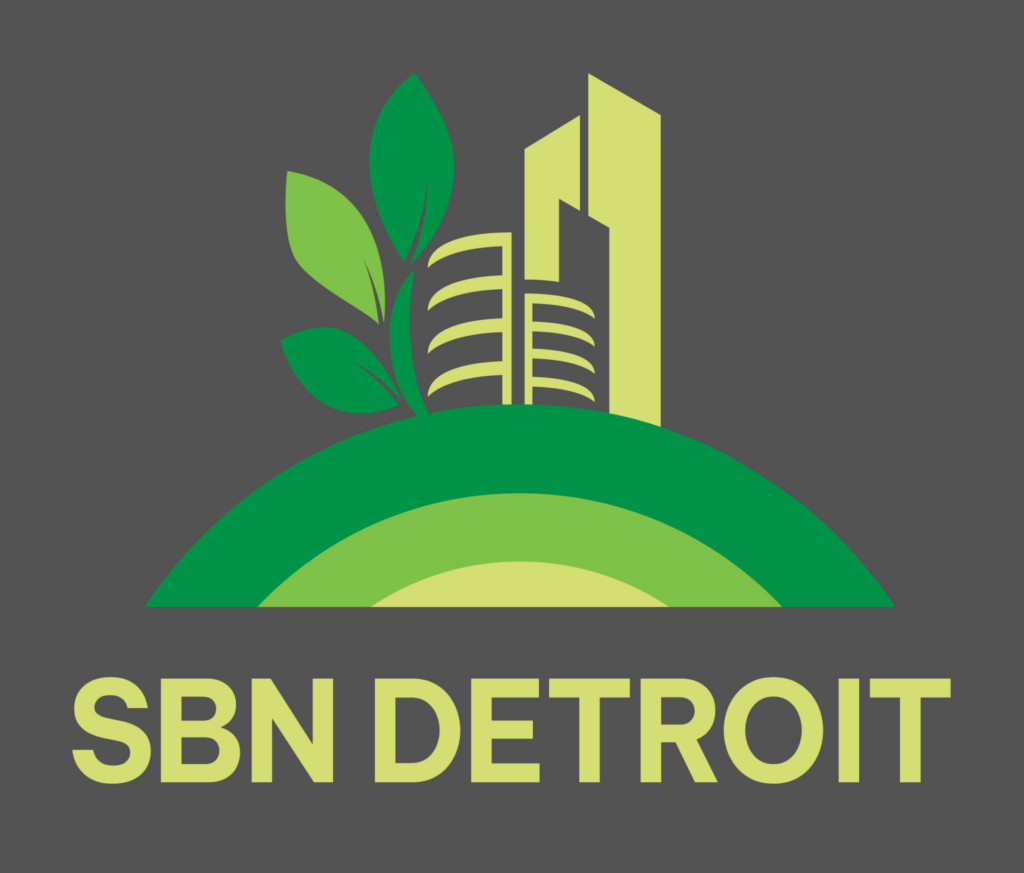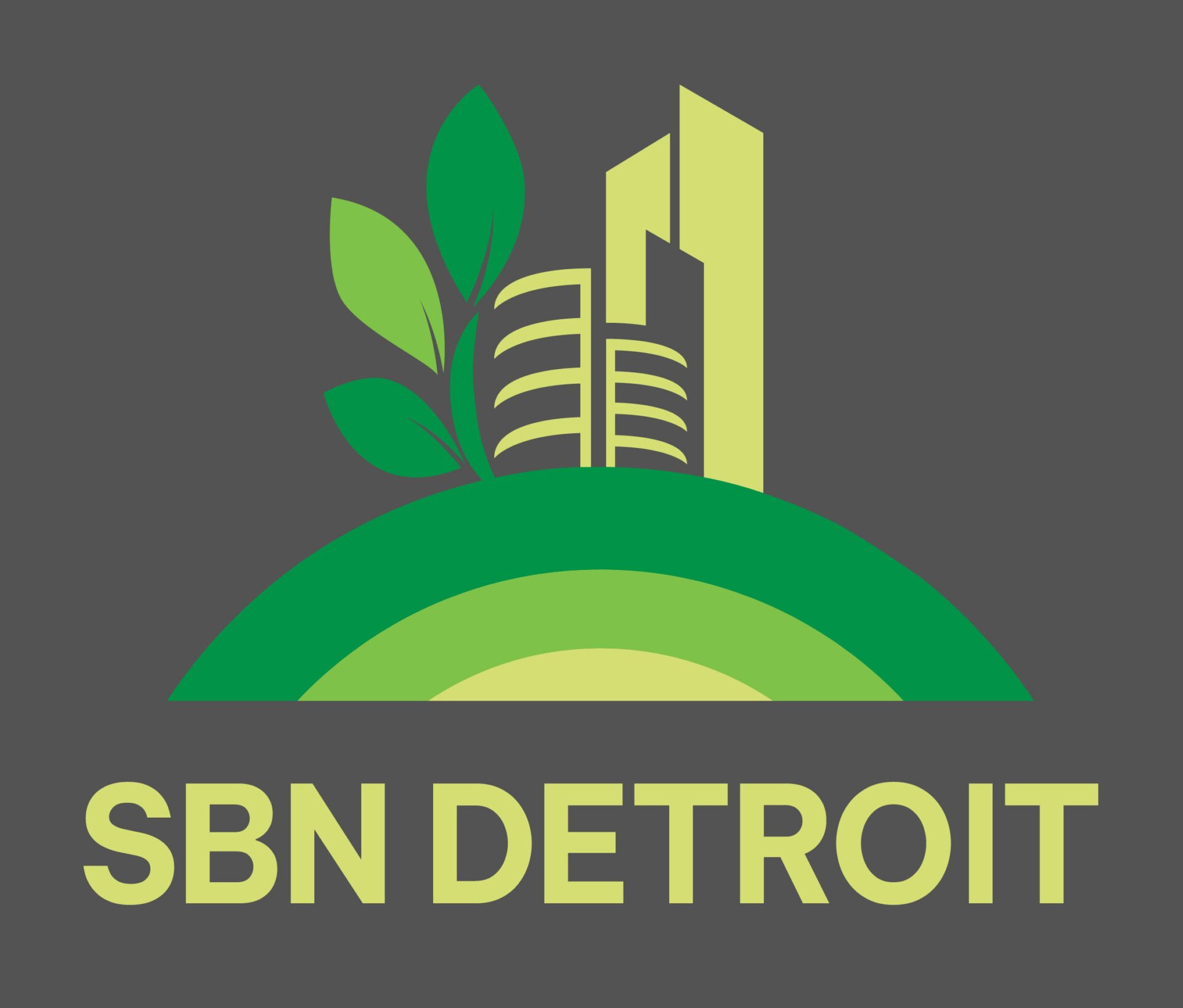The Intersection of Development, Movement of Goods, and Sustainability
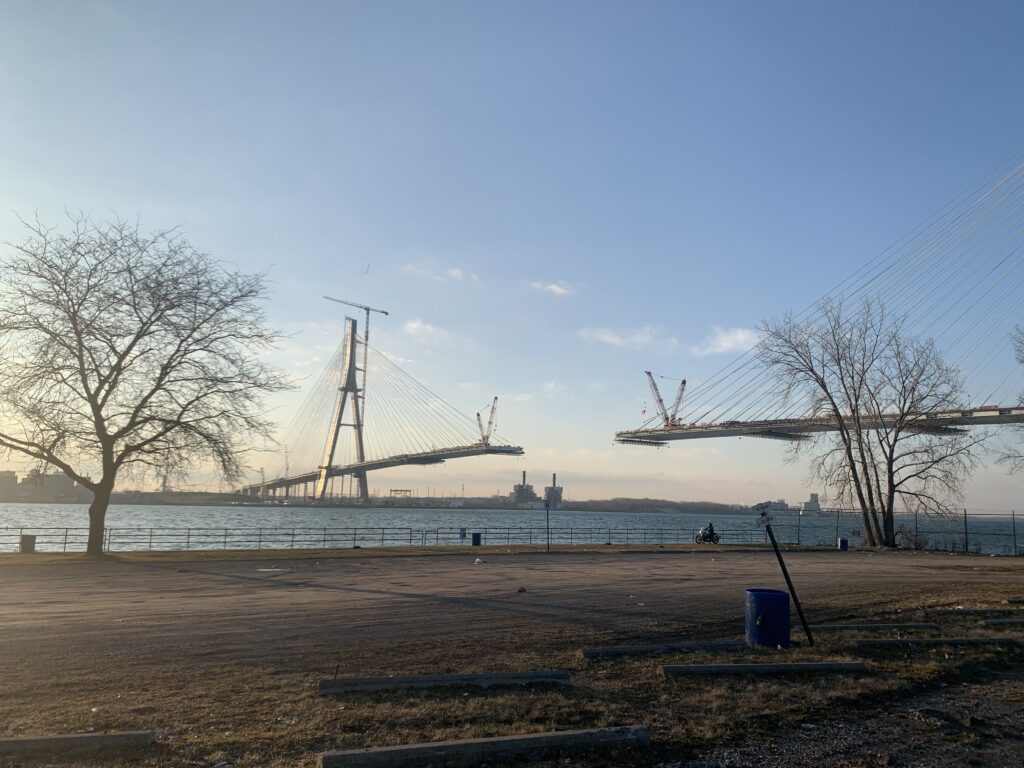
Nine months ago the Port of Detroit launched a decarbonization project aiming to reduce its environmental impact and improve air quality. The project – in partnership with Tunley Environmental and Southwest Detroit Environmental Vision (SDEV) – involves a range of initiatives, beginning with a full assessment of the port’s current fossil fuel emissions. Concurrently, the construction of the Gordie Howe International Bridge is well underway, due to be completed in September 2025, which has many implications involving sustainability in Southwest Detroit. SBN Detroit interviewed, Mark Schrupp, executive director of the Detroit/Wayne County Port Authority, to get an update on the decarbonization efforts and obtain some insights on how those efforts overlap with the bridge development and the future of air quality and sustainability in that area. Q: We last spoke in August, at which time you were just launching the decarbonization project. Where does it stand now? A: The baseline assessment of the carbon footprint of the Port of Detroit is near completion. This is a significant milestone. We have measured all emissions of bringing materials into the port, including equipment used to move materials, emissions from tugboats, and ships, and broke it down by terminal and operator. Next, we’ll lay out plans for eliminating that footprint over the next twenty years. Q: What will initial strategies involve? A: Most of our focus will be on diesel. Ships and heavy equipment operate on diesel and the quickest fastest way to reduce emissions is to convert to biodiesel. We are pushing hard for that. The long-term solution may be hydrogen, but this involves major upgrades and renovations to the vehicles and ships, and the infrastructure. In the meantime, we can reduce carbon emissions by 14% to 15% by switching to a biodiesel blend right away. This will have immediate impacts on global warming and air quality. Q: Is the use of electricity an option? A: It’s not a good option. The heavy-duty equipment used in the port region would need massive batteries to power them, and there are just not a lot on the market today. All U.S. ships that operate in the Great Lakes are being encouraged to convert to biodiesel. Canadian ships are already switching to B20 and higher blends. This will help when ships are docked and running on generators. Q: How does this intersect with the development of the Gordie Howe International Bridge and the use of diesel and biodiesel in heavy-duty trucks? A: The significant increase in truck traffic in Southwest Detroit makes it more likely to get funding to convert those trucks to hydrogen or biodiesel. The concentration of diesel fuel in this region makes a strong case for that. The switch to biodiesel would help immensely, as the heavy equipment used in the ports can run on that too. It would have a massive impact on the air quality. The challenge is getting enough biodiesel supply. It is a supply and demand issue. Also, without government incentives, biodiesel costs more than regular diesel. Other states have implemented tax credits or financial incentives to the producers, and a mandate for the users, creating a carrot and a stick scenario. What is needed is legislation to create funding to increase the supply and incentives to bring down the cost. Canada has created a penalty in the shipping industry for those who don’t use biodiesel. In the Port of Detroit, there is one fuel company – Waterfront Petroleum – that supplies the fuel for most ships. That company has received some funding and is ramping up its ability to provide biodiesel for the ships in reaction to this Canadian penalty. We are working to help them secure funding, etc. At the same time, we are helping to educate ship owners on using biodiesel. There are some extra filter changes and small operational things that need to be done to get the most from the fuel. Industry players promoting this to help ship and truck owners understand how to use it. Q: Overall, do you think the development of the bridge is a negative or positive for the port? A: The bridge has driven up prices on land in the area. One of the projects we are working on is to extend a rail line to the waterfront for a private partner, and the prices for land to run that rail line have gone up because of speculation around the bridge. But it will have a positive impact on our region in terms of manufacturing. The bridge will help keep Detroit as the epicenter of most of the automobile production. If auto manufacturing remains strong, those sectors will need more raw materials that flow through the port. This will be bolstered by the bridge because it will make the movement of goods more efficient. This will ultimately have a ripple effect on our economy – for the positive. We are also looking at ways we can leverage the bridge to help make the port of Detroit more of an intermodal hub for finished goods and other kinds of goods. For example, instead of big ships unloading on the coast in Quebec or New York and then putting materials on trains to reach our region maybe having the bridge makes Detroit/Windsor a better destination for those shippers to reach midwestern customers. We are still researching this. The challenge is that the really big ships can’t get into the Great Lakes. But we are looking at ways to be more efficient with smaller ships and other solutions. The idea is ultimately to take some of the railroad traffic off the East Coast rail lines and get the goods closer to the customer. Q: What are the next steps in terms of your decarbonization project? A: We are planning a community event to showcase the process and planning and next steps. We are really pleased with the work and collaboration efforts involved in this project and are looking forward to sharing it with the community. We are also in a
Moving Toward a More Just and Sustainable Future in Southeast Michigan
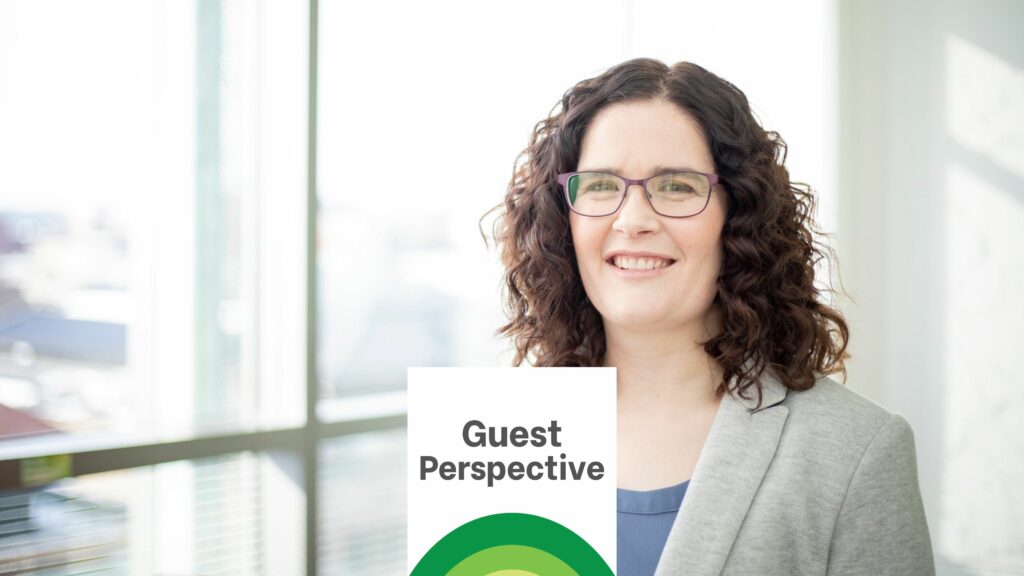
Sara Soderstrom is an associate professor in Organizational Studies and Program in the Environment and the Erb Undergraduate Fellows faculty director at the University of Michigan. Sustainability has evolved significantly over the years. At the University of Michigan’s Erb Institute for Sustainability in Business, this evolution includes working toward market transformation: business transforming the market to make it more sustainable. We can’t be thinking only: ‘How do we do less bad? How do we pollute less? How do we use fewer resources?’ We need to actually think about ‘How do we do more good?’ That fundamentally pivots the way that you think about business—it’s much more of a proactive than reactive conversation. It also centers justice in a way that early business sustainability didn’t. This shift changes the local vs. global dynamic to consider the local as part of the global system, and it sharpens the focus on small and midsize businesses. It also considers supply chains and key stakeholders more broadly. A study that I conducted with Kathryn Heinze, associate professor in the School of Kinesiology at the University of Michigan, shows some of the ways these shifts are happening. The study focused on the nonprofit FoodLab, which was operating in Detroit at the time. FoodLab aimed to promote healthy, environmentally sustainable, and accessible food systems and to grow a good food economy by working with its members: local food entrepreneurs. One thing that we realized as we were working with local entrepreneurs was a focus on being embedded in place—what is Detroit? What is the commitment to the city? What is the future for the city we envision? And how do we place ourselves in that future as entrepreneurs? With this network of businesses, there was a strong motivation not just for the financial viability of the business, but for doing good through business. But at the same time, these entrepreneurs have resource constraints, so there are tradeoffs. How do you balance things like a living wage with ensuring composting or locally sourced materials? FoodLab helped ease some of these constraints by serving as a connector that lowered the barriers to entry around sustainability. This way, each entrepreneur didn’t need to have all the answers or all the resources—they could get the information they needed about sourcing, financing, or best practices through the network. FoodLab functioned as part incubator, part social movement organization, connecting folks with these shared interests to collectively learn, but also as the space that could aggregate these resources and make them accessible to people, so that they could more effectively move forward towards sustainability and justice goals. FoodLab asserted that they couldn’t have a just and sustainable food economy if there wasn’t engagement, ownership, and voice from diverse entrepreneurs that reflect the City of Detroit. So they had a lot of intentionality around diversity and engagement, both in who was participating as entrepreneurs in the network, but also in what they were prioritizing as their goals as an organization. It was centering equity and justice in almost every conversation and decision they were having. The ways that FoodLab built its organizational practices and structured conversations made sure that everyone involved felt like they were heard, even in contentious conversations, which built trust and helped them move collectively towards this more just and sustainable imagined future. The Erb Institute – a partnership of the Ross School of Business and the School for Environment and Sustainability at the University of Michigan -. works to create a sustainable world through the power of business. Somewhat like FoodLab, we also serve as an enabling network. The students are the key actors, We are the convener, and then the network continues with alumni who are now 10 to 20 years out but still lean into us and each other for support as they work toward solutions to sustainability and justice challenges. Two of our key programs are: Impact Projects, through which students design projects, often working directly with businesses or partnering with businesses and community partners on organization-led projects. The projects give businesses access to students who have time, expertise, and passion around sustainability and justice efforts, who can help them focus on an issue—such as supply chain, procurement, or skills redevelopment. Erb on the Road, which brings both graduate and undergraduate students to businesses, nonprofits, and other organizations across Michigan. The program allows students to engage with a variety of different types of businesses and nonprofits that are focused on local sustainability challenges and figure out solutions for them. For undergrads specifically, what has been powerful is hearing them reflect on learning what is happening locally—which makes what we talked about in the textbook real—but their experiences are helping them recognize that business and sustainability is an available career path. People are committed to sustainability in myriad ways, and you don’t need to wait until you are chief sustainability officer to do sustainability. The Erb Institute is focused on preparing future leaders – and also service to the state of Michigan. We want students to recognize that being part of the University of Michigan isn’t just the Ann Arbor campus – it’s also the state and world. So we work to help focus that commitment to: What does it really mean to be the leaders and the best? Supporting and engaging locally in Detroit and across Michigan is part of that. Be sure to subscribe to our newsletter for regular updates on sustainable business practices in and around Detroit.
Martinrea: Balancing Growth with Energy and Waste Reduction Goals
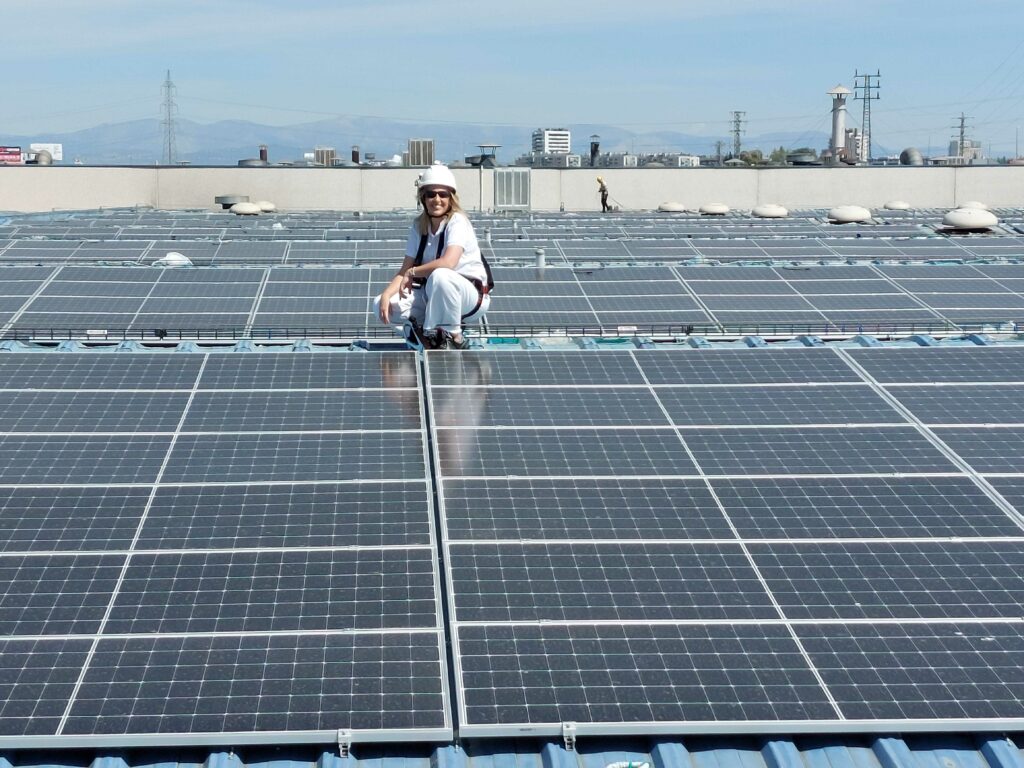
With over 19,000 employees working in 56 manufacturing, engineering, and technical centers in over 10 countries, Martinrea International is a global auto parts manufacturer focused on the design and development of lightweight structures and propulsion systems. Its sustainability goal is to operate in a socially responsible and ethical manner centered around respect for the environment, laws, universal human rights, and communities around the world. SBN Detroit spoke with Rachel Handbury, director of sustainability, to find out more about the company’s approach and execution. Q: How do you approach sustainability at Martinrea? A: Martinrea views sustainability as a holistic approach that encompasses both people and the planet. Our vision is to make lives better by being the best supplier we can be in the products we make and the services we provide. One of our ten guiding principles is to ultimately “leave It better.” Q: How is sustainability organized internally? A: There are a lot of different layers within Martinrea to achieve sustainability. It is embedded throughout the company from leadership to the manufacturing plants. We have a Sustainability Steering Committee, and the group holds quarterly meetings. This is led by our CEO, and his presence in the meetings drives the importance. We have a strong team working constantly on sustainability that meets weekly. This involves a sustainability lead from each of our four business units (Aluminum, Metallics, Flexible Manufacturing Group (FMG) and Fluids). We review each business unit’s sustainability targets, initiatives, and implementation. As you can imagine, each group drives their sustainability priorities slightly differently due to their different manufacturing processes. Q: In around 2019/2020, Martinrea hired a third-party consultant to assist with the sustainability strategy. How did that work? A: Martinrea utilized this consultant team to perform an internal materiality assessment, identify our stakeholders, and propose a sustainability strategy, which I was hired to manage. We then developed the business unit sustainability lead team and the Sustainability Steering Committee – the management structure needed to implement the sustainability strategy. Q: How do you get employees involved in sustainability? A: We do this in multiple ways. Education is key. The more our employees know about sustainability and how Martinrea supports sustainability, the more they want to incorporate it at work and in their homes. The fact that our leadership is on board is very important. It’s embedded from the top down and vice versa. Sustainability is also part of our internal business plan. We have implemented sustainability scorecards for the manufacturing plants and within each business unit, so everyone has clear sustainability targets they are looking to achieve. We also give out an annual ‘Leave it Better’ award to a plant that is excelling in all aspects of sustainability. The purpose is both to highlight the work being done and to foster involvement. The added benefit is that the winning plant inspires others to do similar work in their plant. Q: What are your short-term goals for 2024? A: We have a year-over-year goal of a 3% reduction in energy intensity (energy consumption relative to sales) in all operations. We also have a year-over-year absolute carbon reduction goal of 3%. This year we added internal water reduction goals, and we are working to reduce water consumption focusing on the plants located in high-water risk areas and plants that have the highest water usage. Q: What are your longer-term goals? A: 35% reduction in absolute carbon by 2035 without carbon credits, and we strive for every manufacturing plant to be zero landfill. Q: What are your biggest challenges? A: We are a growing company, so as our production increases, we have to balance that with continuing to achieve our reduction goals. Q: What are the biggest opportunities? A: Sustainability is very important to our customers and communities. We are an authentic company achieving our sustainability goals through energy efficiency and giving back to the communities in which we work and live. Our approach to sustainability provides a competitive advantage since our customers want to work with sustainable suppliers. Q: How are your suppliers vetted when it comes to sustainability? A: Suppliers are a big focus for us right now. Just as our customers view us as partners in sustainability, we also view our suppliers as partners. We have sustainability embedded in our supplier assessments and our supplier code of conduct. We are also providing more education to our suppliers so that they understand why it’s important to us and also to them. Some of our suppliers are in the early stages of sustainability and we can help to pull them along on this sustainability journey. Q: In 2022, Martinrea set a goal to reduce carbon emissions by 35% by 2035. How will you get there? A: It’s a multifaceted approach. But boiled down, we focus on reductions first. We need energy to produce parts, but we are looking at how we can use energy in the most efficient ways. The next stage is to look at renewable energy. In one of our plants in Spain, we just installed solar panels that provide 10% of the plant’s energy. Q: You have reduced carbon intensity by 19% since 2019 – how? A: This same strategy. We start with low-hanging fruit. There were significant reductions made by switching lighting to LED, simple changes in welding techniques, and more. It’s really about having eyes on the manufacturing process through the lens of sustainability and making changes. Q: What does the future look like? A: Following the strategy we’ve developed to push sustainability further each year, we will be utilizing innovation to accomplish energy and waste reductions, increasing efficiency, and then incorporating renewable energy, where possible. At Martinrea, it’s not about making broad claims, it’s about being authentic and digging deeper to see where we can make a difference, both for people and the planet. Be sure to subscribe to our newsletter for regular updates on sustainable business practices in and around Detroit.
Newly Developed MiSide – Working to Build Sustainable Neighborhoods in Detroit
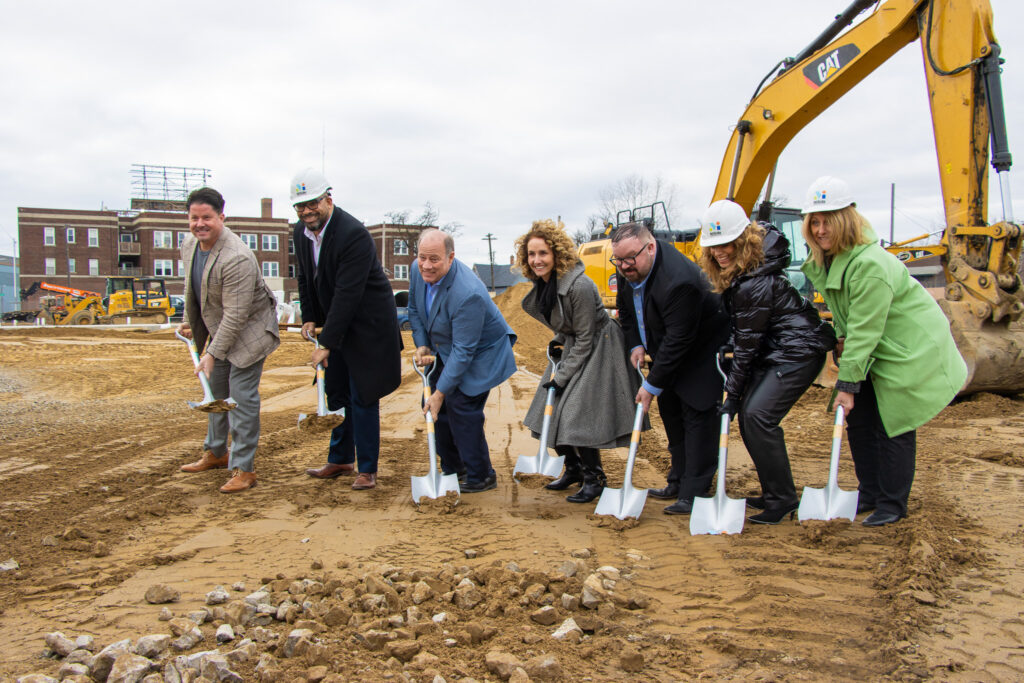
The MiSide Community Impact Network’s mission is to ensure that children, individuals, families, and communities have access to great healthcare, quality education, a comfortable home, and the money they need to build the life they desire. As such, their work is steeped in sustainability. SBN Detroit interviewed Timothy Thorland, executive director of MiHousing, and Hector Hernandez, executive director of MiWealth, to find out more. Q: What is the impetus behind the MiSide Community Impact Network? Thorland: It was formed (in late 2023) by two human service organizations in metro Detroit – Southwest Solutions and Development Centers Inc., which recognized that by combining they could offer a broader range of services to more low-to-moderate income families than either could alone. More importantly, both organizations understood that the families who seek them out for support are frequently facing multiple challenges and that a single organization would not be able to meet all of those needs. The service array now represented under MiSide can help with many of the most frequent challenges our families face – access to quality behavioral and physical health care, finding safe affordable housing, enrolling children in safe and affordable childcare, and gaining the skills to earn a good living. Q: MiSide’s mission is to provide individuals and communities with equitable access to health, education, self-sufficiency, and wealth accumulation opportunities. How do you think this mission plays out in terms of sustainability in the communities where you do your work? Thorland: One of the greatest predictors of sustainability for a community is stability in the community, and stability can’t happen for families unless the components outlined in MiSide’s mission are accessible to them. The way we’ve seen sustainable community improvements play out in our neighborhoods is through concentrated and coordinated services that start to transform a handful of families who reside in the area. As their circumstances improve, they stay in their neighborhood only if the environment around them begins to improve as well, and as long as they can continue to find what they need near them. So, working as part of the community to improve the housing stock, create anchors of affordability, avenues for homeownership, and wealth building must go hand-in-hand with the other services and supports we provide. With this collective approach, over time, whole neighborhoods and communities start to transform. Q: How does MiHousing lift the economy and facilitate equity and wealth building? Thorland: Over the past 25 years, MiSide Housing and its subsidiaries have developed more than 800 rental housing units, rehabilitated more than 1,000 single-family homes for homeownership, built and sold more than 100 homes for homeownership, facilitated scores of minor home repairs, developed more than 150,000 square feet of neighborhood office and commercial space, and originated more than 300 first or second mortgages, and beautified or improved more than 100 vacant land parcels – all together well more than $325 million of production. While our work has been predominantly in the affordable rental market, since 2011 we have been more actively engaged in single-family home ownership: First in the foreclosure/real-estate-owned market as a purchaser/rehabber/reseller of abandoned homes throughout Southeast Michigan; and, second, as a facilitator of down-payment assistance mortgages in partnership with NeighborWorks and Wells Fargo. While all of these programs contributed mightily in their own way to the economy, equity and wealth building most notably would be our third example. We have facilitated the transition of 53 tenants to becoming homeowners providing transactional guidance, support, homebuyer education, and a mortgage to help them achieve the dream of homeownership. Q: There is a project in the East Chadsey Condon neighborhood that just broke ground. What is the desired impact there? Thorland: The production of affordable housing is one of the top priorities in the state. In the Michigan Statewide Housing Plan released in 2022, the plan identified a need for 75,000 additional housing units statewide – 39,000 of those identified as affordable housing units. More specifically, the development of affordable housing in the East Chadsey Condon (ECC) neighborhood is important because growth, expansion, and housing costs in the downtown and near-western downtown markets have risen dramatically and continue to push westward. In the ECC market area, more than one-half of all households have a total household income of less than 50% of the area median income. As many as 48% of renter households are considered ‘cost-burdened’ meaning they pay more than 30% of their income toward housing expenses. Nearly 40% are at or below 30% of AMI. The explosive growth emanating out of the Corktown area will only fuel additional demand and increases in housing costs. MiSide is committed to encouraging the revitalization of ECC as a neighborhood of opportunity. The creation and provision of affordable rental housing in ECC is just one important component of our overall community development effort. Through internal programs and resources, as well as nine partnership organizations, we aim to improve the overall quality of life for the neighborhood – positive impacts that encompass health (physical, behavioral, and child development), wealth (workforce development, homeownership education, financial education), housing (multi- and single-family, affordable and market, rental and ownership), and general community development (home improvement, beautification, community programs, parks, and green space, energy, and infrastructure). Q: How does the work you are doing through MiHousing impact businesses in Southeast Michigan? Thorland: While MiSide Housing is primarily devoted to the promotion of affordable housing and community development in Southwest Detroit, our work – often in partnership with others – reaches across the city of Detroit and inner ring suburbs. On the front end, we have 300 units under development and/or construction. Our work with the traditional cadre of real estate development industry professionals and general and subcontractors includes scores of companies contributing to the stability of the industry. On the back end, we own and operate more than 600 units. All of these units/projects, of course, have multiple productive relationships with businesses and suppliers in the operation and maintenance of the units. Additionally, while about 1/3 of our tenant
Detroiters Working for Environmental Justice’s Vision for Sustainability
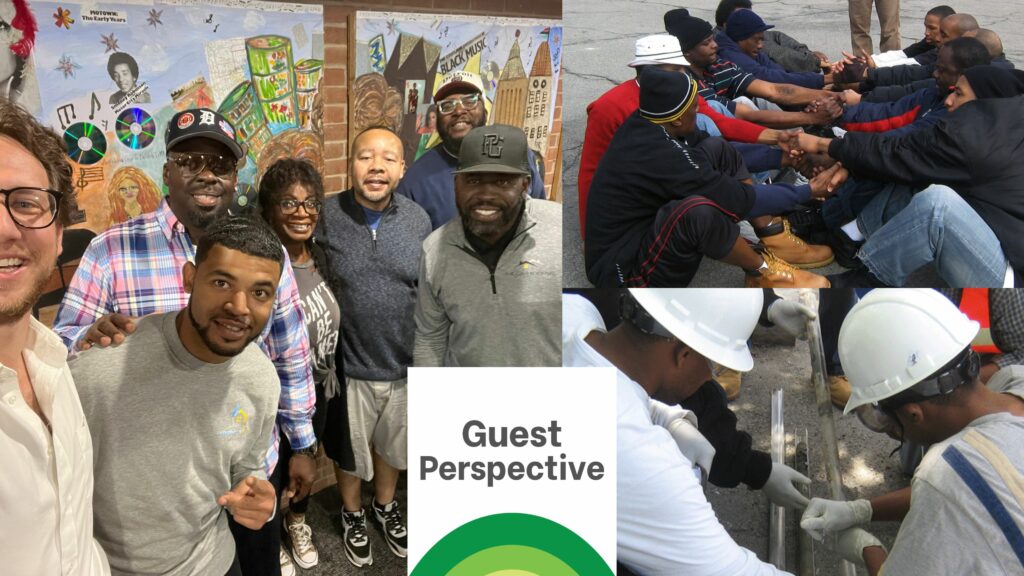
LAPRISHA BERRY DANIELS IS EXECUTIVE DIRECTOR OF DETROITERS WORKING FOR ENVIRONMENTAL JUSTICE AND A LEADERSHIP COMMITTEE MEMBER FOR SUSTAINABLE BUSINESS NETWORK DETROIT DWEJ’s vision for sustainability is rooted in the three pillars of sustainability: health and happiness of community members, a healthy local environment free from hazards and harm, and economic vitality. As an organization that focuses on environmental justice and strives to have the voice of the community-centered as decisions are being made that impact their health (physical, mental, spiritual, and economic), we assert that community members can envision and create healthy communities that meet their immediate and distal needs. A healthy community is one in which all systems work together to support the health and well-being of all its members. Local businesses are part of the community’s ecosystem and thus play a unique role in supporting the health and well-being of the community. Ideally, the relationship between community members and local business is mutually beneficial as they prioritize health and co-create a healthy community. Local businesses and community members can work together to identify threats to community well-being and create strategies to address challenges. In Detroit, and beyond, climate change threatens our ability to achieve and maintain physical, mental, spiritual, and economic health. As we experience more extreme weather locally, such as extreme heat and annual “100-year floods”, we recognize that our built environment may not be able to weather the storm (pun intended). Unfortunately, our existing residential housing stock and current construction practices are too often ill-suited for current and future climate conditions. The mismatch between what is available and what is needed creates threats to the health of people and planet. DWEJ developed a contractor accelerator program that focuses on contractors increasing their awareness about ways to improve the built environment to mitigate risks related to climate change while centering sustainability. DWEJ’s contractor accelerator program, Building Health, serves as an incubator to support peer-to-peer learning among Detroit-based, Detroit-serving contractors of color. Building Health increases contractors’ awareness and implementation of “environmentally responsible and resource-efficient” practices that have: Bottom-line business benefits Individual and community health benefits Decrease environmental degradation. Building Health increases contractors’ understanding of the impact they can have on health. For example, participating contractors are presented with strategies for upgrading and greening residential housing in ways that include the use of various building methods and materials that can make homes more energy efficient. These improvements decrease greenhouse gas emissions, improve the health and comfort of the home, and improve the economic health of the occupants by reducing the cost of utility use. Participants receive financial and technical assistance to implement practices as part of the program as well. Additionally, contractors learn how to best communicate the benefits of sustainable repair and rehab practices to clients. The role of local contractors is just one example of the opportunity our community has to transform our ecosystem and economy for the better. There is a unique and distinct role that local business plays in supporting people and planet. Sustainability is an iterative process where we must work collectively toward the goal of having healthy and vibrant places in which to live, learn, work, play, and pray. — Check out Laprisha Berry Daniels’s recent #TEDTalks: Lessons from the Past on Adapting to Climate Change Be sure to subscribe to our newsletter for regular updates on sustainable business practices in and around Detroit.
The Beauty Industry and Its Impact on Sustainability
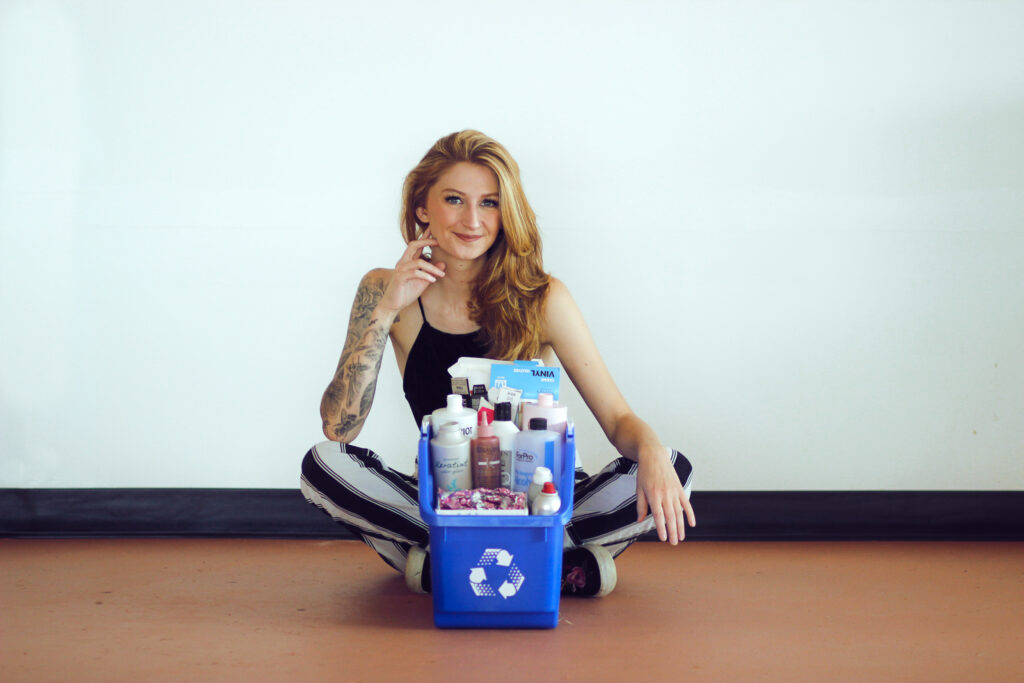
The beauty industry’s net worth is estimated at $646 billion, yet cosmetologist Hannah Craik saw a gaping hole in terms of education and resources available regarding sustainability. So, she turned that into an opportunity to create Salonvironment and help the creation of Green Beauty Community. SBN Detroit interviewed Craik about the work she’s doing in Southeast Michigan to help salons and stylists become more sustainable. Q: Share with us your background that ultimately led you to develop Salonvironment? A: I was a cosmetologist for ten years and worked behind the chair for seven. When the pandemic hit, I was going through some life changes and took some time to reflect on what truly makes me happy and what I want to do. I believe I was put on earth to serve others. At that time the wildfires in California were so alarming, I started thinking that I needed to do more. The beauty industry has a large impact on the environment, yet it lacks education and resources around sustainability. So everything clicked. Q: What is the impetus behind Salonvironment? A: I love the beauty industry. I also love the outdoors, hiking, and nature. So I thought, why not combine the two? I think beauty professionals are superheroes, and as I said, there is not much support within the industry for developing sustainability practices. So three years ago I started Salonvironment and I’ve never felt more connected to myself, my community, and the world. This is a way I can make an impact. Q: You focus on recycling, alternative products, salon efficiency, and green marketing. How does that translate in your services? A: To address recycling, we look at what waste salons have, and what products they use and connect them to local recycling programs. I also consult with clients on how to stay organized and not get overwhelmed when it comes to recycling. Regarding products, there are several brands now that have launched vegan or cruelty-free products. Also switching to nonplastic tools like bamboo is an option as is purchasing higher-quality tools that will last longer so as not to contribute to landfills. Salon efficiency deals with running the business with sustainability in mind. One thing a salon can do is switch from selling products in the studio to selling them online, decreasing the risk of expired inventory that heads to landfills. And when it comes to marketing, salons should highlight their green efforts. Also creating partnerships with other businesses that incorporate sustainability practices is good exposure. Q: What is your approach and process when consulting with a salon or stylist? A: We start where the client is and work together to build realistic habits. It’s so easy to get overwhelmed, but I break it down into bite-sized pieces and start simple. As an example, salons utilize a lot of energy, water, etc. They can easily switch to LED lights, use more electrical strips, and switch to sink heads that conserve water. Then there are longer-term investments. We can look at their plumbing infrastructure, solar panels, and even the color of their roof. We can also help consult on grants available. Q: Who are some of your clients in Southeast Michigan? A: I work with many. One is Kismet Studio in Farmington Hills. I’ve also partnered with Mint Hair Crafting in Ferndale, and I’ve worked with Salon and Co. with locations in Shelby Township and West Bloomfield. I also work with some salons that are out of state. Q: What are the biggest hurdles in the salon environment when it comes to sustainability? A: Lack of support. You have to figure a lot of it out yourself. This is a $6 billion global industry yet there is a lack of regulations, policies, and education. There are a lot of people who want to make a difference. They just need help and support. I helped launch the Green Beauty Community in May 2022 with Daniel Johnson, Mazey Heydman, and Jacquelyn Rodriguez. It offers free education and connects like-minded individuals to create a bigger conversation for change in the industry. Tapping into this community is a great way for stylists and salon owners to address the challenges they face. Q: What is the question you get asked most about sustainability from stylists? A: “Where do I start?” I also get a lot of questions on the best ways to recycle, since that’s how I started. There is also confusion about how to get grant money for sustainability programs. Q: How can stylists assist their clientele to become more eco-friendly? A: Starting the conversation and leading by example are the most important things. People don’t know what to do or how to start until they are presented with solutions. People learn best by example and from others. So I think stylists should explain why they are making these changes (like recycling and why it’s good for the community, what products clients can use, etc.) Clients will typically follow suit. Q: How can people get involved? A: Check out Salonvironment.com. Join the Green Beauty Community. Talk about sustainability within the beauty industry to others. Spread the word and the resources. The beauty industry is enormous, which means we can make a big impact. That’s so inspiring to me and to many others. Be sure to subscribe to our newsletter for regular updates on sustainable business practices in and around Detroit.
Valeo – Aiming for Carbon Neutrality by 2050

In 2021, global automotive supplier Valeo committed to reaching carbon neutrality by 2050. With $21 billion in sales and 109,900 employees in 29 countries, Valeo has a presence in Troy, Auburn Hills, and Highland Park. SBN Detroit interviewed Valeo Group CAP50 Director Zobeida Gutierrez about the company’s sustainability efforts globally and its impact on Southeast Michigan. Q: Tell us about the CAP50 project. A: Championed by CEO and President Christophe Périllat, Valeo’s global decarbonization plan primarily focuses on 156 production plants. However, our actions extend to our design centers and Valeo Service activities around the world. I have worked for Valeo for thirty years in a variety of positions, including roles in quality in operations, supplier quality, project management, and special projects. I am now the global lead for Valeo’s CAP50 decarbonization plan, and I support other sustainability and circular economy initiatives within North America. Q: What are the specifics of the plan? A: This is our action plan to contribute to carbon neutrality by 2050 across the entire Valeo value chain. Valeo has set 2030 near-term CO2 reduction targets validated by SBTi (Science Based Target initiative) Scope 1 and 2 CO2 emission absolute value reduction of 75% and Scope 3 upstream and downstream reduction of 15% from our 2019 baseline. This goal translates to removing 8.1 million metric tons of greenhouse gas emissions by 2030. Since 2019, we have removed 4.4 million metric tons as of the end of 2022, confirming the effectiveness of our CAP 50 plan. The second reduction target integrates benefits realized from electrification within our product portfolio, accounting for a 45% CO2 emission reduction due to avoided emissions at third parties as compared to the 2019 CO2 emissions footprint baseline. Q: What actions are you taking to achieve this? A: Our framework includes all three scopes as well as greenhouse gas emissions. Scope 1 targets direct emissions coming from our operations. We are currently investing to get our top 100 CO2 emitting sites Energy Management ISO 50001 certified to ensure they are focusing on energy efficiency to drive a 30% reduction in energy consumption by 2030. We are also switching to LED lights, eliminating fuel, oil, and natural gas use, installing solar panels at our sites, and introducing energy-efficient equipment. Scope 2 focuses on indirect greenhouse gas emissions incurred by our energy suppliers. Our low-carbon electricity procurement supports the increase of renewable energy capacity projects. Our internal target is to secure 50% of energy coming from renewable sources by 2025 and 80% by 2030. Valeo has committed to investing $436 million to support Scope 1 and Scope 2 actions. Scope 3 involves indirect greenhouse gas emissions within our supply chain, upstream and downstream. Upstream efforts target indirect emissions incurred by our suppliers, and downstream efforts target indirect emissions incurred by the use and end-of-life of our products. For Scope 3 upstream, we launched a sustainability assessment questionnaire to evaluate our supply chain sustainability maturity level. We also align our suppliers’ greenhouse gas emissions targets with ours – a reduction of 75% for Scope 1 and Scope 2 and 15% for Scope 3 Upstream emissions vs. their baseline year. Our suppliers are also required to cascade these targets throughout their entire supply chain. Our transportation levers within Scope 3 include greener fuels, optimization of filling rates for trucks, multimodal scenarios such as replacing airfreight with train or truck, and the use of returnable and greener packaging. For Scope 3 downstream, Valeo is accelerating its technological roadmap and cementing its global leadership in the electrification market. Currently, 60% of our portfolio supports EVs. We are researching and validating greener materials and designing more energy-efficient, lighter, and greener products. No reduction in greenhouse gas emissions is too small. Every Ton of CO2 reduced counts. Even if it’s simply balancing HVAC systems in our buildings to save energy, simple things can add up to several tons of CO2 emissions reductions. Q: How is your team structured to support the goals and initiatives? A: It starts at the top. Our board of directors has set targets and reviewed achievements related to sustainability and climate change since 2016. In addition, since 2020, a director has been responsible for monitoring corporate social responsibility issues. The Chief Sustainability Officer position within Valeo aligns with the Corporate Vice President of Sustainable Development and External Affairs, who works in partnership with the Chief Technology Officer and Vice President of Strategy. Sustainability topics are therefore under the direct oversight and management of the CEO. Our human resources, health, safety, and environmental, ethics and compliance, research and development, and operations departments (purchasing, quality, projects, industrial) all contribute to Valeo’s sustainable development policy, and each business group assigns CAP 50 champions. Q: What are your biggest challenges? A: Our biggest concern – which is not unique to Valeo – is the lack of renewable energy capacity. The world needs to triple global renewable capacity from 2022 levels by 2030, which must reach 11,000 gigawatts in line with the International Energy Agency’s net zero emissions by 2050 scenario. Also, there is a need for stronger domestic policies and international support, most notably in clean energy investment in emerging and developing economies. Q: What are the biggest opportunities? A: Electrification acceleration. The introduction of electric vehicles is an opportunity, not only for cars but also for micromobility. Another opportunity is preserving our resources by creating a circular economy. Valeo has created the 4R Circle, which is our plan for Robust Design, Remanufacturing, Repair, and Recycling aimed at reducing the use of raw materials and preserving the planet’s resources by giving our products extended life and recyclability options. Q: How is the work you are doing impacting Southeast Michigan? A: In June 2022, we signed a contract with energy supplier DTE Energy to contribute 100% of renewable energy usage at our Michigan locations (Troy, Auburn Hills, and Highland Park) starting in April 2024. This contract is for 20 years, and it demonstrates Valeo’s commitment to supporting renewable energy projects
Boosting the Economy and Investing in Communities to Create Sustainable Neighborhoods in Southwest Detroit

The Southwest Detroit Business Association has been in existence for almost 70 years with a mission to support the community’s vision for a healthy, vibrant neighborhood. SBN Detroit spoke to the association’s president and CEO, Laura L. Chavez-Wazeerud-Din about the work being done with both businesses and residents to achieve this. Q: What is the impetus behind the Southwest Detroit Business Association? A: In a nutshell, we are here to dismantle barriers and bring resources to business owners and residents in Southwest Detroit. Q: What kinds of barriers? A: Southwest Detroit is a diverse community. Basic things such as navigating the City of Detroit website are difficult because it’s in English only. SDBA works to dismantle barriers by fostering community engagement and promoting economic inclusivity. We aim to create an environment that protects, promotes, and preserves local businesses and the community by addressing challenges such as economic disparities, access to capital, language barriers for a population that is almost 70% Hispanic, and enhancing the overall business ecosystem in Southwest Detroit. We also help residents and business owners navigate the new developments in the area. We are happy to see the city thrive but don’t want that to happen to the detriment of this very historic and culturally relevant community. Q: Your programs include a focus on business development. Tell me about this. A: One way we do this is through our Façade Improvement Program that’s been in existence for twenty years. Some might call this a beautification project, but I think it’s a sustainable model for our businesses. This program helps business and property owners improve their storefronts by providing grants for architectural services and reimbursement for up to 50% of construction costs. The scope of this program has grown through the years and we’ve expanded it to include multiple business corridors in Southwest Detroit, such as W. Vernor Hwy, Michigan Ave, Springwells, Mexicantown, and Junction just to name a few. It has been funded by JP Morgan Chase for the last 17 years and we are now looking for a new funder. We also have a Small Business Advocacy Center. This year we were able to leverage funding from the state of Michigan and bring $800K in equity investments to minority-owned business owners for projects and job creation. An example of this is Dunamis Clean Energy Partners. They were awarded $321K to build out a second line to produce electric charging stations. Another shining star for us this year was saving 16 food vendors that were slated for closing by the city. These vendors failed to receive certifications and pay the associated fines. This was a result of the vendors not understanding the process due to the language and communication barrier. Many didn’t even know they were slated for closing. We worked for months to ensure that not one of them closed, and that was a huge success. Overall, we work to make sure all development and infrastructure is inclusive and equitable to residents and businesses and reflects the culture of the community. An example of this is the La Joya Gardens development. This is an affordable housing mixed-use, mixed-income building that will provide 53 residential units and include retail on the first floor. It is a new building, construction began in 2023. The community named this complex via a naming contest we held. Q: Elaborate on how you work with businesses to facilitate the continuation and enhancement of a stable, economically healthy community. A: We are here to serve everyone from young start-ups to those doing business for decades. We collaborate with partners and other non-profits to bring resources and we are a small business resource hub. Our business community does not always feel safe and comfortable in seeking out resources outside of the community, so we facilitate bringing resources to them here on-site. We are a trusted advisor and conduit with a mission to help our businesses thrive and to make sure that Southwest Detroit is an integral part of the city. Q: Fill us in on your work with the Southwest Detroit Greenlink Project. A: The work we do here is making sure that we are thoughtful and strategic in terms of urbanization and population growth. The ultimate goal is to make Southwest Detroit a tourist destination. We work to get buy-in from the community and preserve the stories of the community. We have run multiple engagement meetings, open houses, surveys etc., to make sure the voice of the community is heard. Two components make up the vision of the Southwest Detroit Greenlink. The first is to complete the Greenlink and all of its sections and the second is to link the Southwest Detroit Greenlink to the other community greenways. Goals of the Greenlink include encouraging residents to walk and bike, giving tourists a welcoming place to frequent local businesses and restaurants, enhancing the economic value of residential and commercial property, and facilitating investment in homes and new businesses. Q: What are your biggest challenges? A: Funding. Also making sure people understand that this work is relevant. The City of Detroit has a lot of layers and it’s our job to secure the resources that are essential and necessary for this community to thrive. Q: What are the biggest opportunities? A: Bridging the digital divide is a big opportunity, and we have had several entrepreneurs rise up since the pandemic to help do so. Engaging with our youth is also a huge opportunity. The Center of Music & Performing Arts Southwest (COMPÁS) is a program that began in 2007 that helps bring mentorship to young people. We work with schools to make sure they understand that SWBDA is a resource. A lot of the kids in the community have been around their family businesses and in many cases these kids are helping to run the websites, and social media, and more. We are a resource to help bring the businesses into the next generation. Q: How can businesses get involved? A: Go to our website to
Royal Oak’s New Sustainability Manager Tasked with Green Goals
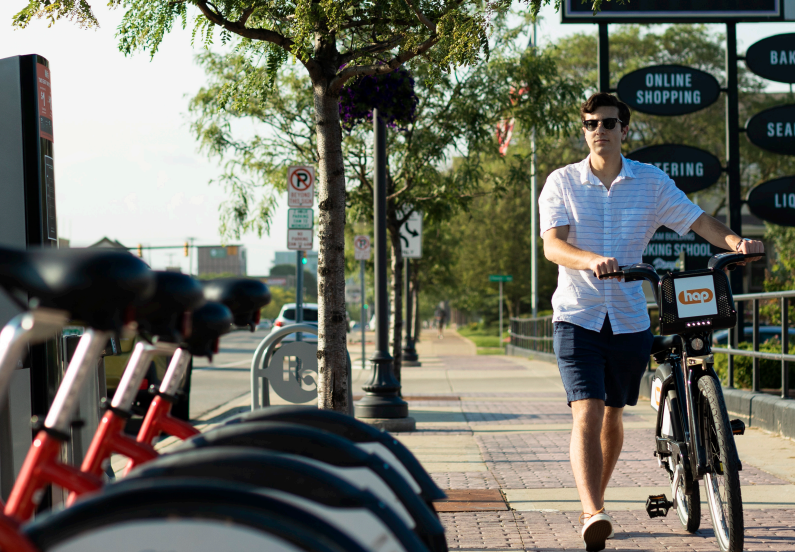
Angela Fox took on the role of sustainability manager for the city of Royal Oak in October and hit the ground running. She is tasked with implementing the city’s comprehensive Sustainability and Climate Action Plan and will bring her knowledge and experience from her varied background to do so. SBN Detroit talked to Fox to find out more about her approach and priorities. Q: Tell us a bit about your background and how you came into this role. A: In 2010, I opened a store in Holland, Mich., called Tree Huggers. It was very ahead of its time, but my mission was to make sustainability easier and less overwhelming for people. Shortly after, I started a nonprofit called Green Michigan with two partners, and we were doing consulting work to simplify sustainability for people and organizations. This involved education and community projects. During the COVID pandemic, I attended Arizona State University to obtain a master’s degree in sustainability. That ultimately led me here. Q: Why did you choose sustainability as a career? A: There was a pivotal moment. On a very cold Michigan day years back I received a note in my door saying that my recycling bin had dryer lint in it. It had inadvertently landed there without my knowledge, but that note changed my life. I started composting and then opened my store a few months later. At that time, I found recycling and sustainability overwhelming and decided I wanted to start doing what I could for the planet and helping others do the same. Q: What excites you most about this new role? A: The people. The residents and the Environmental Advisory Board came together to make this position a full-time role and it’s my dream job. I can’t imagine not assisting in this way. This is not a job you punch out of. I’m driven to do all that I can to mitigate the harmful effects of climate change. I’m passionate about making the world a better place, and this is the way I’ve chosen to do it. Q: How is it structured internally? A: I am the only full-time city employee leading sustainability for the city of Royal Oak, but I have passionate people in every city department working collaboratively with me. The city also hired a full-time grant writer, so we’ve been working together to identify grants that will fund the various projects. The Advisory Board helps guide and prioritize my efforts. Again, the people in Royal Oak are invested. I hosted a happy hour to meet the community recently, and over sixty people came, from business owners to residents to commissioners. I’ll be championing the efforts, but the community wants to be very involved. Q: The new Sustainability and Climate Action Plan for the city cites two main goals: First to achieve a 40% reduction in greenhouse gas (GHG) emissions from 2018 levels by 2030, and achieve net zero by 2050, and second to operate the City of Royal Oak in a sustainable way supporting the community, economy, and environment. How will you approach these goals? A: Yes, this is my guiding document. The plan includes objectives and a series of action plans. I’m working to prioritize the action plans and projects associated with reaching these goals and take them to the Advisory Board as a first step. Q: How will your work impact businesses in Royal Oak and Southeast Michigan? A: I am here to help them be more sustainable. Some businesses in Royal Oak don’t have recycling efforts in place, and that’s not because they don’t want to, it’s because they have not had access to options or resources to put it into place. I am here to make it easier for them and help find solutions that benefit everyone. In terms of recycling, I plan to increase this city-wide. I’m looking into composting and food reduction. This summer I plan to launch energy efficiency guidelines for businesses to focus on to reduce energy and water usage and waste. I’m looking to focus on residents and businesses simultaneously. I think there is strength in talking to both audiences at once. Q: How can businesses get involved? A: I’m working on developing a task force and volunteer opportunities. I’m new to the region and working on creating a network here, and I welcome any businesses or partners who want to help us get further along in our sustainability goals. Q: What will be your biggest challenges in executing the Sustainability and Climate Action Plan? A: Prioritizing it. There are some big initiatives, and there is a lot to accomplish. Funding is another challenge. There are some amazing grants available, but even with a grant writer, prioritizing the grants and getting funding to do everything we want to do is a potential challenge. Q: What are the biggest opportunities? A: Collaboration. Collaboration with other communities and counties. I can’t speak to how it’s been done here in the past, but typically, when it comes to sustainability, people tend to work in silos. But I think there is a shift happening. I think with grants opening up and everyone working toward common goals, people are inviting collaboration. I’m encouraged by that. Also, our youth. I teach students at Arizona State University now, and they are excited and motivated. In a way, we’ve put an unfair burden on them by creating these environmental issues and looking to them to help figure it out. But I am so impressed by our young people and the way they mobilize and innovate to create change. Q: What does the future look like? A: There are so many opportunities in sustainability, but I want to see this Climate Action Plan through and celebrate the wins. For me, now, the future is about bringing people together and figuring out ways to make Southeast Michigan greener and a better place to call home. Be sure to subscribe to our newsletter for regular updates on sustainable business practices in and around Detroit.
EcoWorks: Addressing Climate Change by Enabling Sustainable Communities
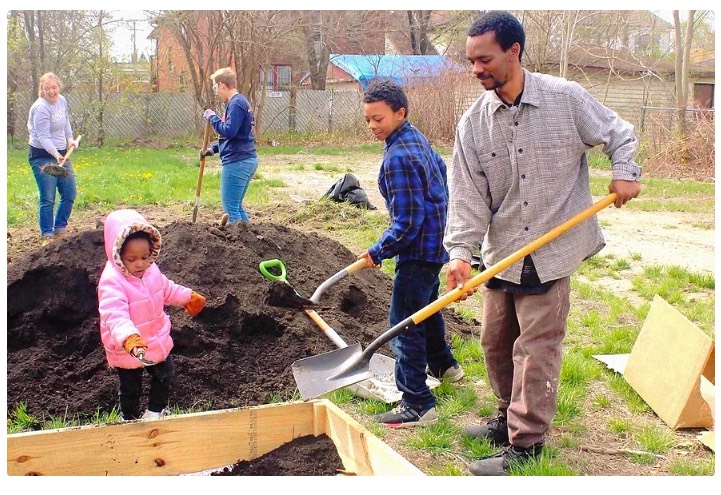
EcoWorks is a nonprofit that works at the intersection of community development and sustainability. Based in Detroit, EcoWorks serves residents, households, community organizations, businesses, and municipalities, working to create just, equitable, and inclusive solutions to climate change. SBN Detroit spoke with Briana DuBose, EcoWorks executive director, to find out more. Q: Tell us about EcoWorks A: EcoWorks is a Detroit-based nonprofit that addresses climate change by enabling Michigan communities to be more environmentally and economically sustainable. We provide transformative climate and sustainable solutions for communities that are underserved and often unseen and unheard. We do this through community development, green consulting, home energy assistance, climate advocacy, education, and workforce development. Our Eco-D program is an equitable approach to securing affordable, healthy resilient homes and neighborhoods. We design and advocate solutions that promote utility affordability, housing security, climate resilience, and resident-led neighborhood development. We also work to engage community members to be part of learning about sustainability and provide direct service programs, upgrades and repairs, and more for underserved communities. Currently, we are working with four areas in Detroit – Hope Village, Southwest, Berg-Lahser, and Yorkshire Village to build out EcoDistricts. We offer comprehensive resources to help these areas transition to decarbonization and electrification. The program also provides residents and community organizations with resources to achieve healthy, affordable, resilient, and energy-secure homes and neighborhoods. Q: How do you work with Detroit neighborhoods and communities specifically? A: We look at ways to ensure the health and safety of all households. We focus on disadvantaged communities working with people who are vulnerable to the impacts of climate change – for example air quality. We partner with coalitions to improve policy and design innovative financial models for healthy, green, housing and neighborhoods. An example of this is River Rouge, which is surrounded by multiple plants and therefore has poor air quality. We go in and have workshops to discuss sustainability and energy-saving measures in their area. People are often surprised that asthma can be caused by poor air quality. We will go in and perform needs assessments on homes and work toward proper sealing and weather stripping and filters so the residents can have clean air in their homes. We also work with the communities in a bigger way to do things like build rain gardens, create green spaces, and more toward the things the specific areas need. Q: How does the Strategic Community Initiatives Program work? A: We develop custom-fit climate and energy solutions for municipalities, school districts, health systems, small businesses, and nonprofits. SCI has secured over $5 million in clean energy investments and over $30 million in lifetime savings for over thirty Michigan municipalities. EcoWorks serves as the lead technical provider as part of the Sacred Spaces Clean Energy Grants, eliminating disproportionate energy burdens for low-income congregations, inclusive of Black, Indigenous, and People of Color (BIPOC) communities statewide. Eleven houses of worship in low-income Michigan neighborhoods from Detroit to the Upper Peninsula will become more energy efficient with support from this $1.24 million grant of federal funds through the Michigan Department of Environment, Great Lakes, and Energy (EGLE) to make improvements that reduce their consumption of fossil fuels for electricity, heating, and cooling. From this, we expect the congregations to achieve a 15% energy savings that will go back into the communities. Q: How can a business in Southeast Michigan take advantage of EcoWorks? A: We bring a unique blend of people and change-management skills coupled with technical assessment and project management capabilities to businesses. Contact us and we’ll set up a meeting to talk. We can develop and manage holistic energy and climate action plans collaboratively for organizations. Q: How do you think EcoWorks impacts Southeast Michigan businesses? A: EcoWorks can help organizations stay nimble and resilient as energy costs and climate impacts rise. We can develop energy plans and implement energy projects by engaging people and bringing them together. We are often conveners. We are on the front line in communities, and we go into businesses to discuss how they may be contributing to the environment and sustainability in their communities. Often, businesses don’t know where to begin or may think sustainability initiatives are going to be expensive. We help educate them and show the ROI. Most businesses want to leave a better footprint on their community; they just need the resources to do so. Q: What are the biggest opportunities EcoWorks represents for Detroit? A: While our roots are firmly planted in energy conservation, we have grown to emphasize all aspects of sustainable development as it relates to building affordable, energy-efficient residential housing and commercial buildings. We are committed to promoting environmental equity and we take pride in helping communities get there. Be sure to subscribe to our newsletter for regular updates on sustainable business practices in and around Detroit.
